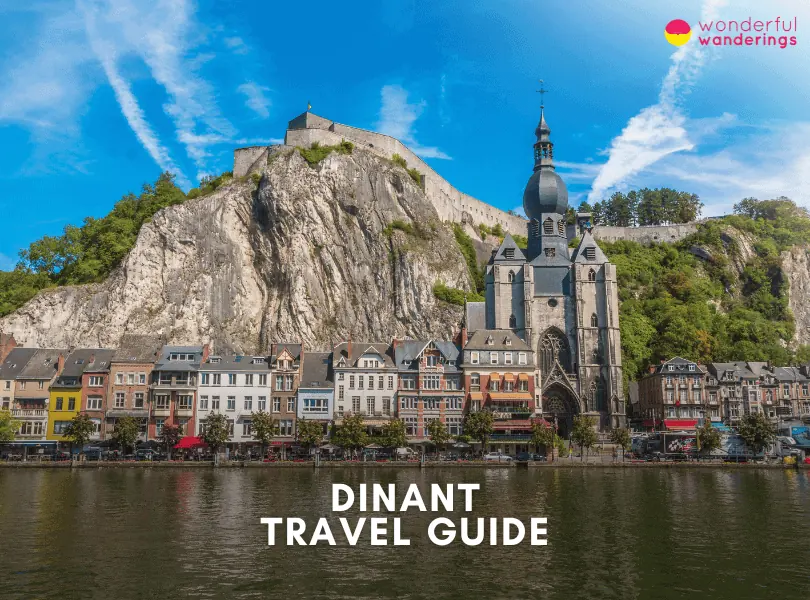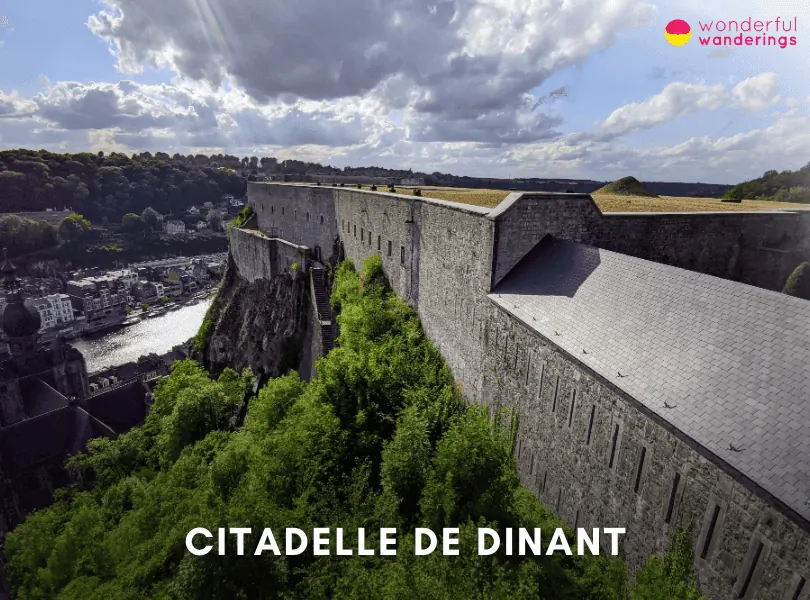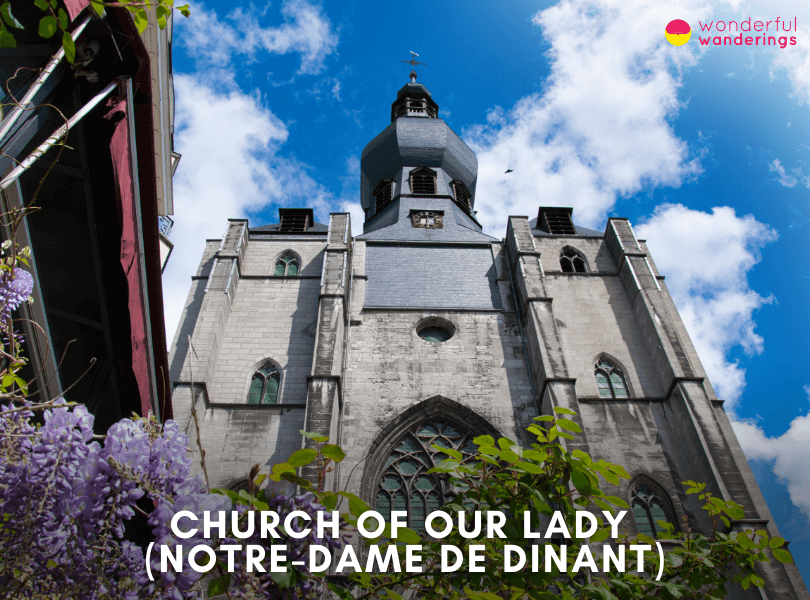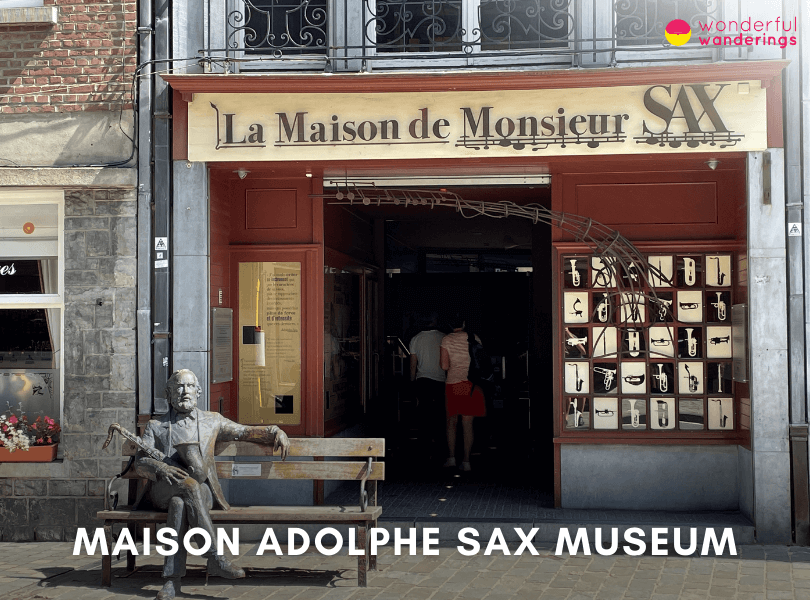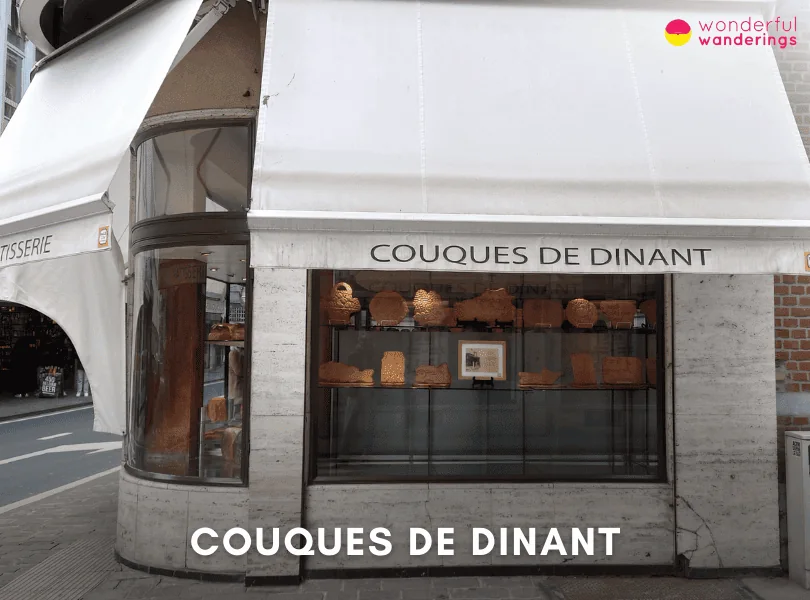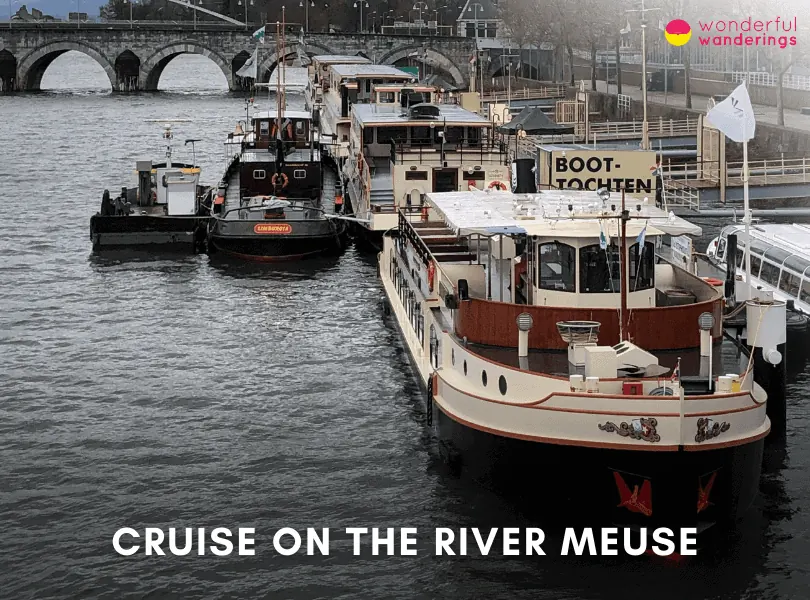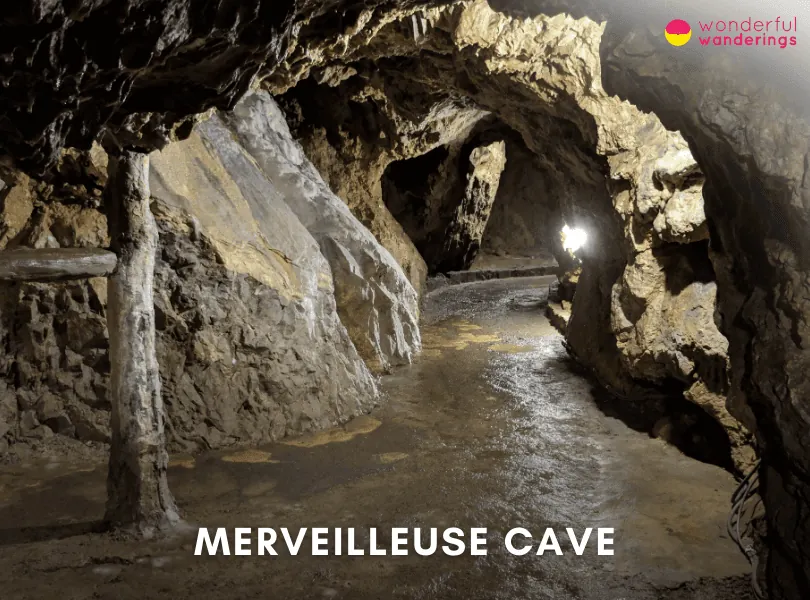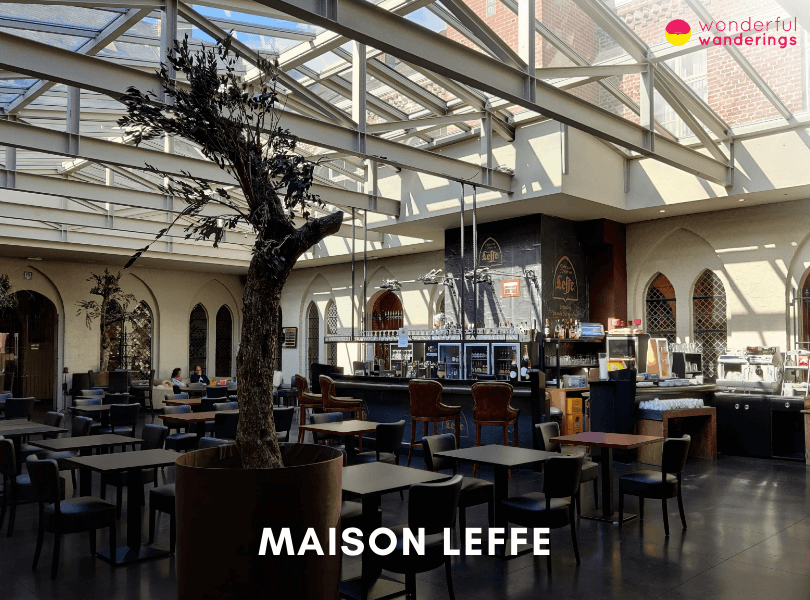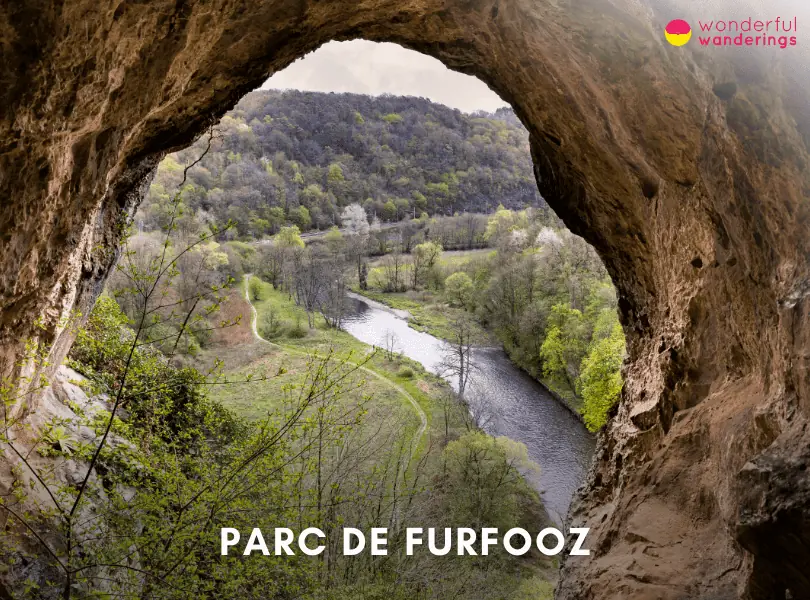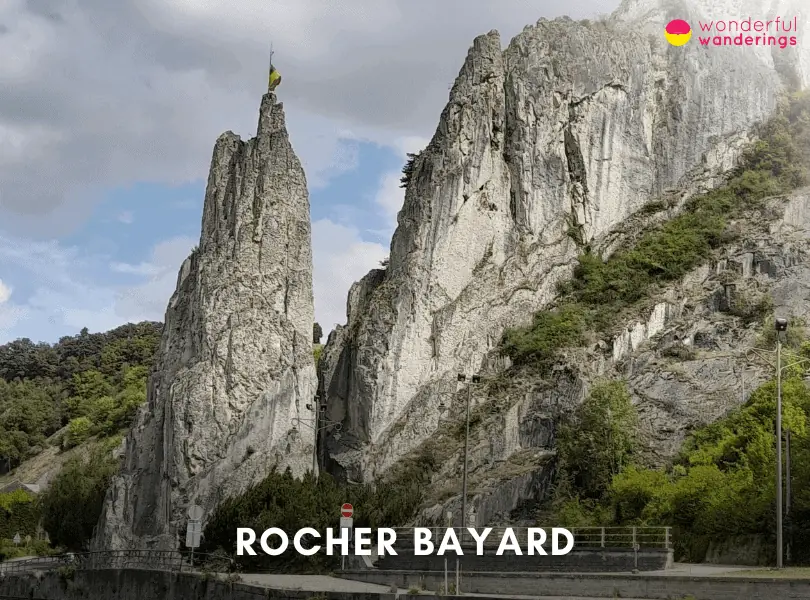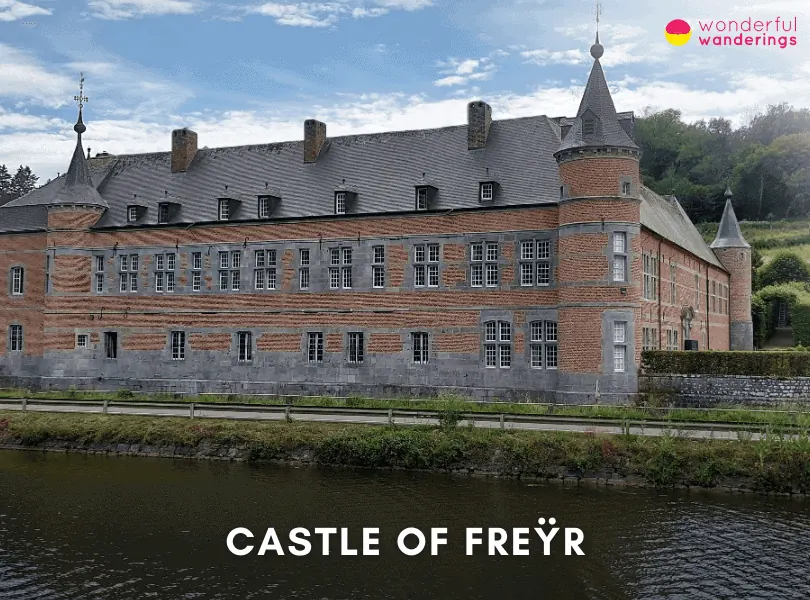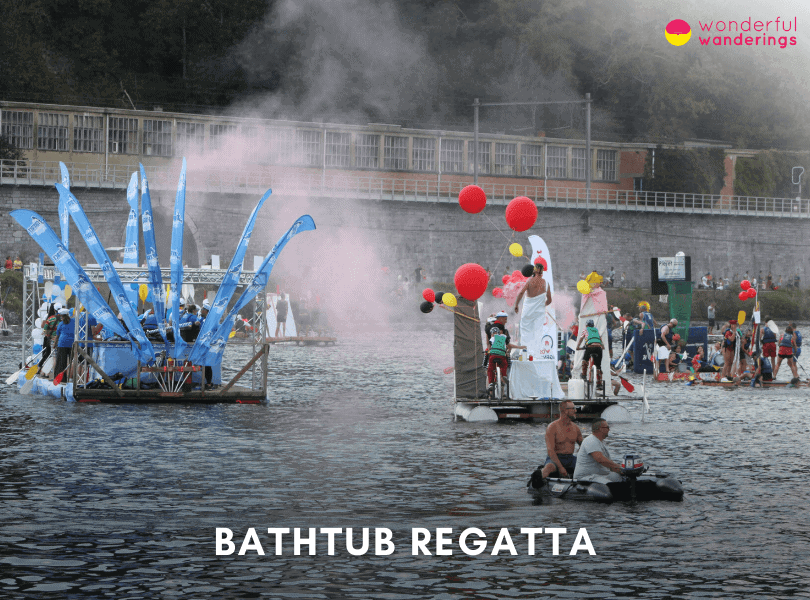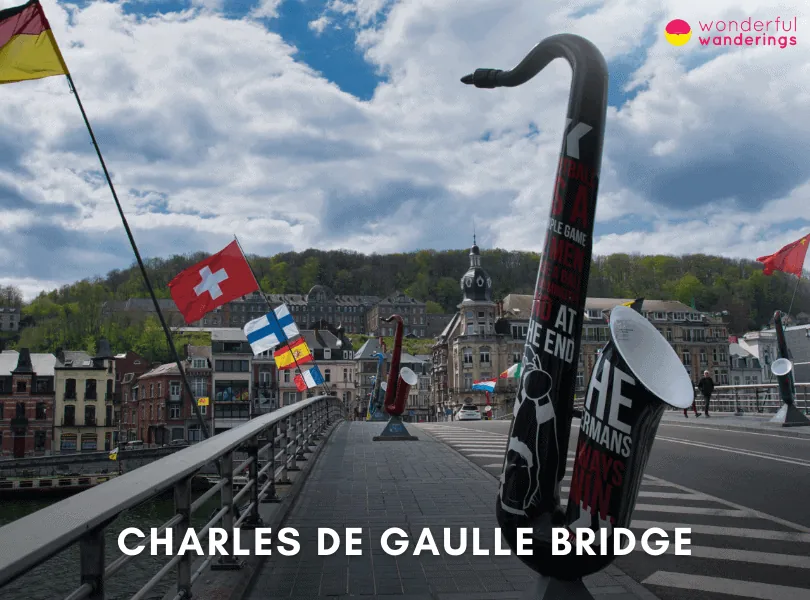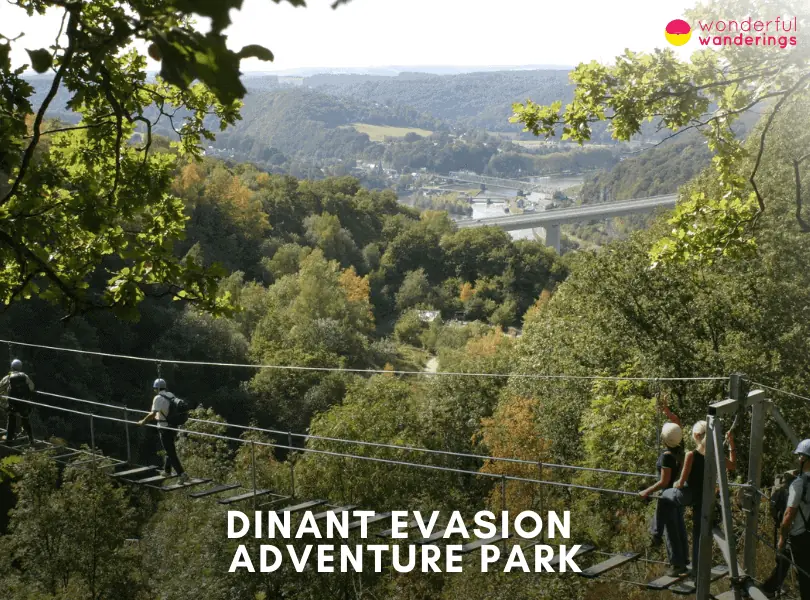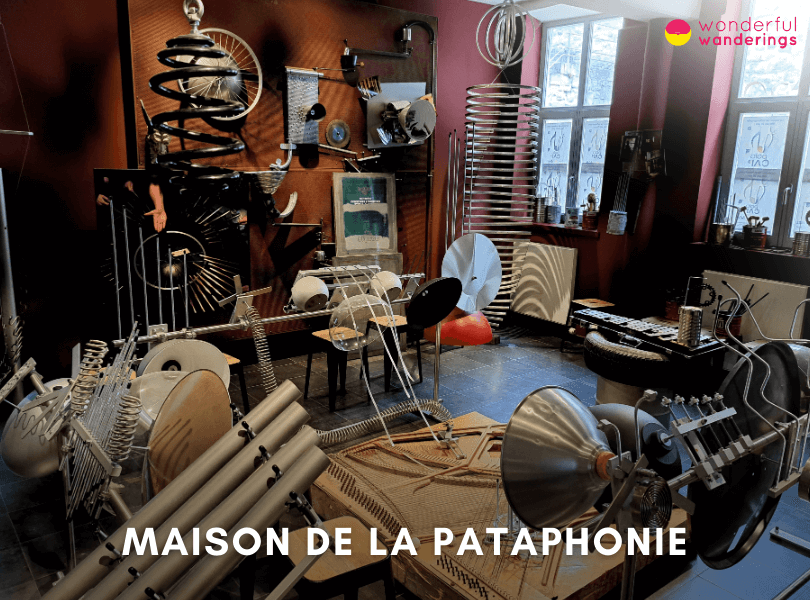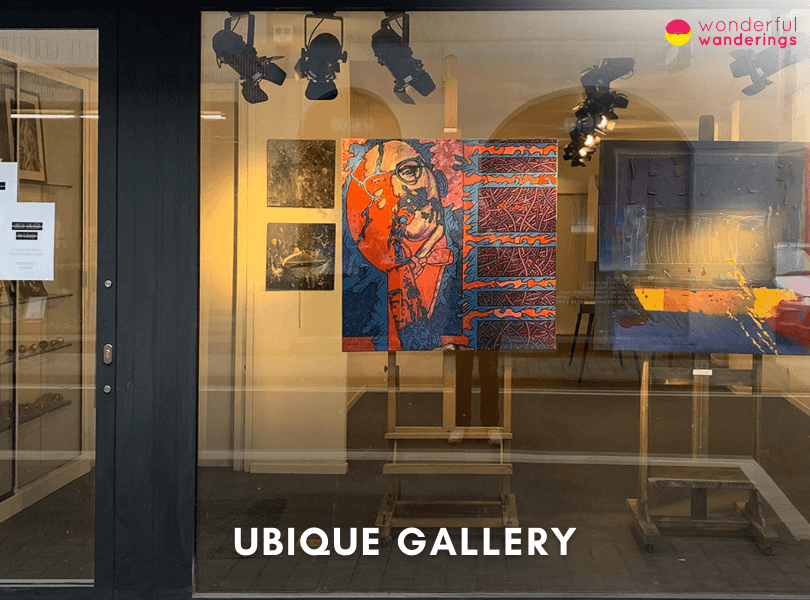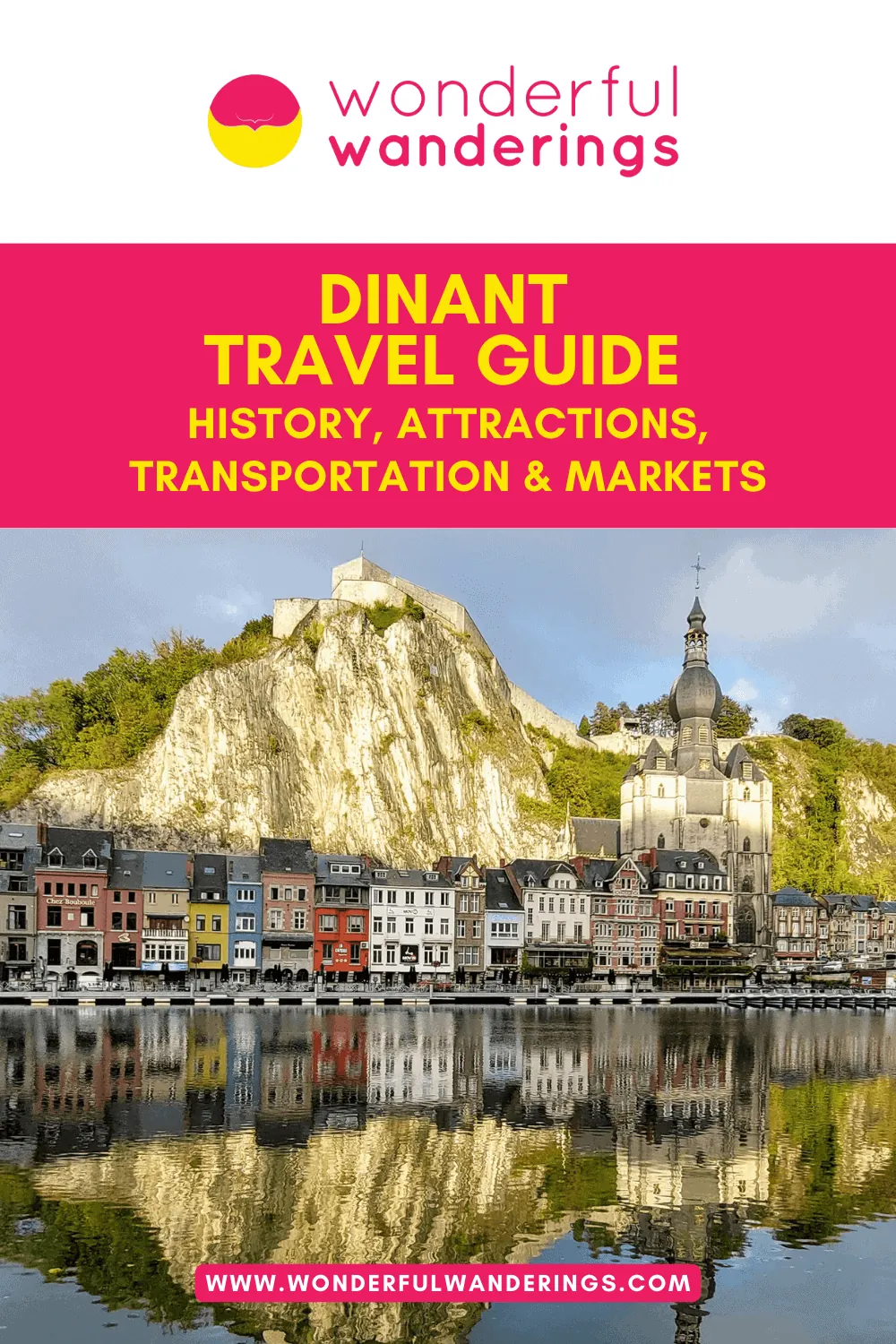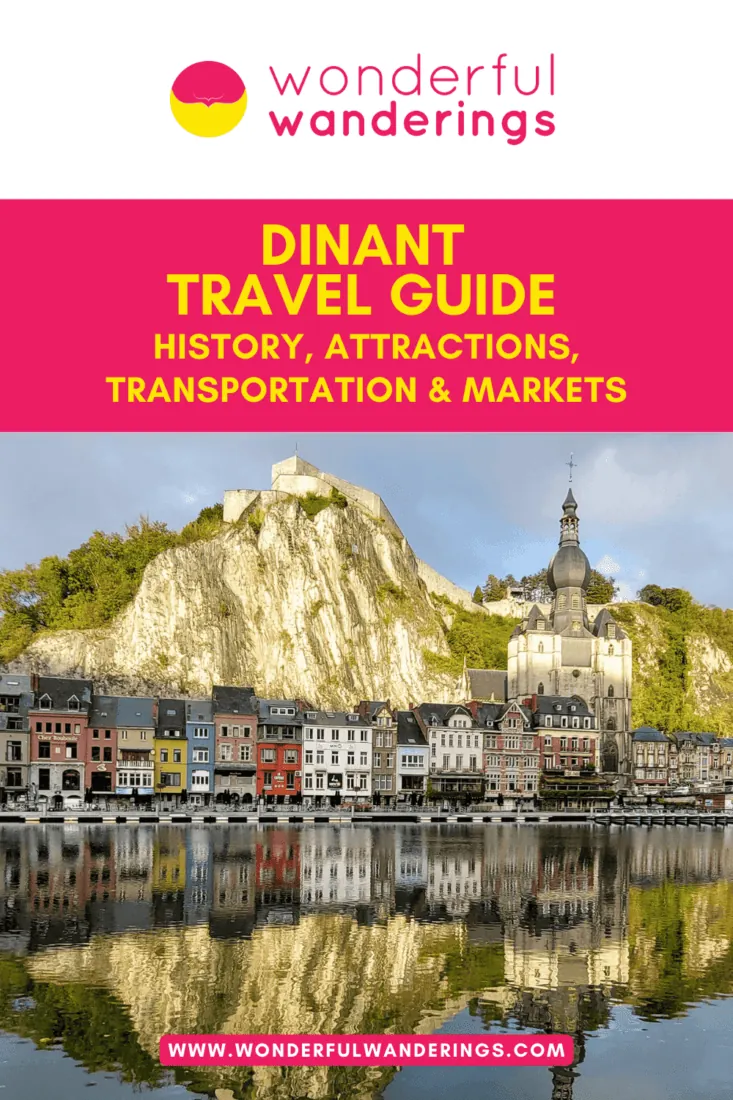Dinant is a picturesque town situated along Belgium’s Meuse River. Nestled between steep cliff walls in a sharp bend of the river, this medieval town looks like a scene straight from a fairytale. Dinant’s strategic location has shaped its long history as a coveted trade port, leading to periods of prosperity as well as devastations from repeated invasions given its position on the frontier between Germanic and Latin Europe. Today, Dinant thrives as a popular tourist destination celebrated for its well-preserved Gothic architecture set amidst the beautiful Ardennes landscape.
The town is most famously known as the birthplace of Adolphe Sax, the acclaimed Belgian instrument maker who invented the saxophone in 1841. His father Charles Joseph Sax had opened a musical instrument workshop in Dinant in 1815 that specialized in brassware and woodwinds. This saxophone connection draws music lovers from around the world to visit the Maison Adolphe Sax museum located in Sax’s birthplace.
Beyond the saxophone legacy, Dinant seduces visitors with its dramatic natural beauty and wealth of historic monuments. The town center is dominated by the imposing Citadelle de Dinant, a formidable hilltop fortress first built in the 11th century overlooking the Meuse. Perched on a cliff 155 meters above the river, the citadel provides spectacular views and houses collections spanning medieval arms to Dinant’s involvement in World War I. The Collegiate Church of Notre Dame, rebuilt in Gothic style after its WWI destruction, remains a resplendent sight along the riverbanks with its distinctive pearl-shaped tower.
Listed below are the things to do in Dinant.
- Visit the Citadelle de Dinant. The Citadelle de Dinant is a hilltop fortress overlooking Dinant, with museum exhibits showcasing medieval to World War I and II military history. Visitors can take a self-guided tour, see weaponry and war trench recreations and take in spectacular views of the city and Meuse River. There is a café, restaurant and playground on site.
- Church of Our Lady (Notre-Dame de Dinant). The 13th-century Gothic Church of Our Lady in Dinant features distinctive architecture, like its pear-shaped bell tower. Visitors are welcome to appreciate the history, see religious artwork and relics, view the interior stained glass, sculptures and paintings and take in riverside views. The church can be added to Dinant itineraries.
- Maison Adolphe Sax Museum. This Maison Adolphe Sax Museum celebrates saxophone inventor Adolphe Sax’s life and work. It features interactive elements like a saxophone-shaped floor and panels on Sax’s musical legacy. Visitors can listen to sax music, interact with instrument displays and learn about the local history. The museum offers an engaging and informative experience, especially for music lovers.
- Couques de Dinant. Couques de Dinant is a signature Dinant specialty that is sweet, has a golden honey color and is known for its caramelized flavor. Visitors can observe the traditional production and purchase these biscuits at local bakeries and shops. Organized tours may include tastings and visitors can buy beautifully packaged Couques to take home.
- War Memorial aux Victimes du 23 Août 1914. The War Memorial aux Victimes du 23 Août 1914 Commemorates 674 Dinant civilians killed when German forces invaded on August 23, 1914, during World War I. Visitors can walk inside the memorial and pay tribute to those who lost their lives during the early days of World War I.
- Kayak on the River Lesse. The River Lesse offers kayaking along medieval castles, caves and unusual rock landscapes of Dinant. Kayakers can embark at various spots like Houyet, Gendron or Anseremme, depending on the chosen route and distance. Children ages 5+ can participate when accompanied by an adult, with gear provided. It is an adventurous activity perfect for solo travelers, friends and families.
- Cruise on the River Meuse. Cruise on the River Meuse offers journeys that pass through medieval castles, cliffs and villages, showcasing the landscapes of Dinant. Dinant Evasio offers themed tours like murder mystery evenings on the river, jazz cruises and gourmet cruises with food and drinks.
- Merveilleuse Cave. The Merveilleuse Cave contains 850 meters of galleries and chambers to explore, of which 650 meters are accessible to visitors. This natural wonder contains beautiful white stalactites and stalagmites, underground waterfalls, an underground river and colorful rock formations. Visitors can visit the caves through self-guided tours.
1. Visit the Citadelle de Dinant
The Citadelle de Dinant is an impressive fortress located overlooking the city of Dinant and the Meuse River. The fort was built in 1815 on the site of earlier fortifications dating back to 1051. Inside the citadel is a museum of weaponry and history, with exhibits showcasing the region’s military past.
The citadel is its strategic hilltop location, the breadth of history contained within its walls spanning from medieval times to World War I and II and the views it offers. Visitors can take a self-guided tour of the citadel, see exhibits ranging from medieval weaponry to recreations of war trenches and take in the spectacular views over Dinant. There is a café, restaurant and playground on site.
Visitors can reach the citadel via a stairway of 408 steps from the city center below or by taking a cable car. The citadel can be accessed via cable car or a 408-step stairway from the city center below. There is also vehicle access and parking available behind the citadel. It is open to visitors of all ages. Ticket prices start at €10 ($11, £8) for adults and €8 ($9, £7) for children.
2. Church of Our Lady (Notre-Dame de Dinant)
The Church of Our Lady (Notre-Dame de Dinant) is a 13th-century Gothic cathedral located along the banks of the Meuse River in the city of Dinant. The church is known as the Collegiate Church of Our Lady and has a distinctive pear-shaped bell tower from the 16th century.
Visitors can tour the interior of the church and admire the architecture, stained glass windows, sculptures and paintings inside. The church welcomes visitors daily, free of charge and is open for longer hours in summer. It makes an easy addition to any Dinant itinerary. All are welcome to visit the church, appreciate its history and architecture, see the religious relics and artwork and take in views of the dramatic natural backdrop along the Meuse River.
3. Stop by the Maison Adolphe Sax Museum
The Maison Adolphe Sax, known as Monsieur Sax’s House, is a small museum located at 37 Rue Adolphe Sax in Dinant, Belgium. It is dedicated to Adolphe Sax, the Belgian inventor and musician who created the saxophone and other various musical instruments in the 1840s while living in Paris. The museum stands on the spot where Sax was born in 1814.
The museum is an interactive and interpretive center rather than a traditional one. Visitors can walk along a saxophone-shaped floor while exploring Sax’s history and musical legacy. The museum features trilingual informative wall texts, panels set into the floor explaining his life and work and a giant facsimile of the 1846 saxophone patent document. Visitors can listen to sound clips of various saxophone styles and make some of the instruments “speak” using interactive elements.
The museum can be easily accessed on foot if staying nearby, as Adolphe Sax is located just down the road from the central Charles de Gaulle bridge. It is free to enter and open daily from 9 am to 7 pm in the summer months. The museum welcomes all visitors but especially caters to music lovers and anyone interested in learning about the local history of Dinant.
4. Try the Couques de Dinant
The Couques de Dinant is a type of hard sweet biscuit that originated in the southern Belgian city of Dinant in the 18th century. These are made using just two simple ingredients, wheat flour and honey, mixed together into a dough. The biscuits are baked at a high temperature of 300°C, which causes the honey to caramelize, giving the Couques their lovely golden color and making them hard to bite.
Couques de Dinant can be found in most bakeries and confectionery shops throughout the city of Dinant, such as Pâtisserie Jacobs on Rue Grande 147 or Pâtisserie V. Collard located at Rue Grande 72. Visitors can observe bakers pressing the dough into the carved wooden molds through storefront windows. Visitors can buy beautifully packaged Couques to take home at souvenir shops around town. Organized group tours include Couques de Dinant tastings and other regional specialties as part of an arranged activity itinerary and guide fee. The prices of these biscuits are from €3 ($3, £2) to €10 ($10, £8) depending on size and design.
5. See the War Mémorial aux Victimes du 23 Août 1914
The Mémorial aux Victimes du 23 Août 1914 is a memorial located next to the convent of the Capuchin nuns in Dinant, Belgium. It commemorates the 674 civilian victims who were killed during the German invasion of Dinant on August 23, 1914, at the start of World War I. The Saxon army carried out mass executions of civilians in retaliation for supposed attacks by francs-tireurs (irregular fighters). Hundreds of innocent men, women and children were shot or burnt alive as German soldiers rampaged through the town, destroying over two-thirds of its buildings.
The memorial was inaugurated on August 23, 2014, in the presence of the King of Belgium to mark the 100th anniversary of the massacre. The Brussels-based architecture firm Kascen designed the memorial, which features the victims’ names etched into its walls. Visitors can walk inside the memorial. The memorial serves as a tribute to those who lost their lives and a reminder of the brutality that unfolded in Dinant during the early days of the World War I.
6. Kayak on the River Lesse
The River Lesse is a popular spot for kayaking. The cruise passes through the beautiful scenery, past medieval castles, prehistoric caves and unusual rock formations. Kayak rentals and tours are available through an operator called Dinant Evasion, located at 15 Rue du Vélodrome in the village of Anseremme. They offer self-guided kayak trips ranging from 9 to 22 kilometers (5.5 miles to 13 miles) in length. Kayakers can embark at various spots like Houyet, Gendron or Anseremme, depending on the chosen route and distance. Prices start at €24 ($26, £20) per person.
The river is open for kayaking from April 1st through October 15th each year. Kayaking the Lesse is fun for all ages and the river is perfect for beginners and families. Children as young as five can go kayaking if accompanied by an adult. Safety gear like life jackets is provided.
7. Cruise on the River Meuse
The River Meuse flows through France, Belgium and the Netherlands, offering beautiful scenery for river cruises. Visitors can embark on short sightseeing cruises along the Meuse Valley on boats operated by Dinant Evasion.
The cruises depart from Avenue Churchill near the town center and take passengers on a relaxing journey showcasing sights like Bayard Rock, the Anseremme lock, the medieval Château de Walzin and the famous limestone cliffs called Rochers du Freÿr. There are two main cruise options: a 45-minute route to Anseremme or a longer 2-hour roundtrip excursion to the village of Freÿr.
Dinant Evasio offers themed tours like murder mystery evenings on the river, jazz cruises and gourmet cruises with food and drinks. The boats have both indoor and outdoor seating. Cruises run daily from April 1st to October 15th, with discounts available for seniors and children under 12. It is an activity perfect for people of all ages looking to admire the landscapes of Dinant.
8. Visit the Merveilleuse Cave
The Merveilleuse Cave (Marvelous Cave), known as Grotte de Dinant La Merveilleuse, is an underground cave system located in the city center of Dinant, Belgium. The cave features 850 meters of galleries and chambers to explore, of which 650 meters are accessible to visitors. This natural wonder contains beautiful white stalactites and stalagmites, underground waterfalls, an underground river and colorful rock formations. The cave was discovered in 1904 during railway construction work that was used as a shelter during World War II when the River Meuse was the front line between the Allies and Germans.
Visitors can visit the caves through self-guided tours that cost around €10 ($10, £8) for adults.
The tours take about an hour as visitors descend into the Great Hall and traverse the various “rooms”, including the Chamber of Teats, Boers, Small Columns, Waterfalls and Lace, Diane’s Temple, the Precipice, the Glacier, the Rotunda and the Gallery Albert I. Sturdy shoes are recommended as the terrain is wet and slippery.
9. Drink beer at Maison Leffe
Maison Leffe is a beer museum, tasting room and former monastery located at 23 Charreau des Capucins in Dinant. The museum is dedicated to the iconic Leffe blond abbey beer that has been brewed since 1240 AD. The museum takes visitors on an interactive self-guided tour through eight centuries of brewing history. Maison Leffe uses videos, artifacts and touch screens that explain traditional brewing methods and profile the family of Leffe beers.
Visitors receive beer-tasting tokens to sample two full-sized glasses from a choice of nine Leffe varieties, including the blonde, Ruby, Tripel and darker beers. The ticket costs €12 ($13, £10) and includes a souvenir Leffe glass to take home. The museum is open daily, houses a restaurant and offers views from its hilltop.
10. Parc de Furfooz
Parc de Furfooz is a nature reserve and archaeological park located in the Lesse River valley near the town of Dinant in Belgium. The nature reserve is spread across 50 hectares with a variety of landscapes, including forests, meadows and rocky cliffs along the riverbank.
Visitors can take a marked 4 kilometers (2.4 miles) walking trail that passes 15 points of interest related to the park’s archaeological, geological and natural heritage. The features include the remains of ancient caves that were inhabited 14,000 years ago during the Paleolithic era, the ruins of Roman fortifications and baths dating to the 3rd century AD. The park is home to interesting plant species and sheep that help maintain the grounds. Facilities include a snack bar called La Flobette located on the riverside. Parc de Furfooz offers an educational and scenic walking experience suitable for families and nature enthusiasts. Reservations are required at the nature reserve.
11. Witness Rocher Bayard
Rocher Bayard is a 40-meter high rock formation located between Dinant and Anseremme in Belgium’s Meuse River valley. The Bayard is shaped like an enormous stone needle from the cliffs along the riverbank. This landmark name is inspired by a legend about a magical flying horse called Bayard. The splitting of the rocky in two was created ages ago when a magical flying horse named Bayard passed through this spot, carrying four brothers to safety and cleaving the rock face with a blow from his powerful hooves based on a local medieval legend.
Rocher Bayard has become a highlight for road-trippers in the area. Visitors driving or cycling by can traverse the geological formation firsthand, feeling dwarfed between the monumental stone sentinels. Rocher Bayard is a must-see natural attraction that looks straight out of a fantastical tale, its towering rock needles an iconic symbol of Dinant. There is no admission cost to visit Rocher Bayard. It is free to access and view the rock formation.
12. Walk around the Castle of Freÿr
The Castle of Freÿr is a grand 16th-century Renaissance château located along a bend in the Meuse River near the town of Dinant, Belgium. The castle is classified among Wallonia’s heritage sites. The château has remained for over 20 generations within the same aristocratic family, who expanded and restored the palatial residence over time. Freÿr Castle is considered among Belgium’s most beautiful and is designed in the classic French style, with grounds like the Versailles.
Visitors can tour the interior’s historical grandeur by passing through rooms that feature original antique furnishings. Access to the interiors and grounds requires paid admission. Several vantage points across the river allow visitors to admire the château and walk the perimeter exterior wall for free. The romantic ambiance, history and outdoor spaces make Freÿr Castle a spot for couples, garden and architecture enthusiasts.
13. Attend the Bathtub Regatta
The International Bathtub Regatta is an annual event held every August 15th in the town of Dinant, Belgium along the Meuse River. The participants construct homemade, human-powered boats out of bathtubs and race them along a 1 kilometer (0.6 miles) stretch of the river. The regatta started in 1982 and has grown over the years, attracting over 25,000 spectators. Teams decorate their bathtub boats according to that year’s theme and compete to have the most creative and fastest crafts. The race starts at the Boulevard des Souverains riverbank in central Dinant, near the Church of Our Lady and Dinant Citadel. Participants line the banks of the Meuse River and Charles de Gaulle Bridge to watch the festive, hilarious race. The regatta is open to participants of all ages draws a wide audience and appeals most to those with a quirky sense of humor.
14. Go through Charles de Gaulle Bridge
The Charles de Gaulle Bridge is a road bridge crossing the Meuse River in the town of Dinant, Belgium. Its official address is Rue de la Station, 5500 Dinant. The bridge is named after former French President Charles de Gaulle, who was wounded in the area during a battle in World War I before rising to prominence. The bridge was built in 1953 to replace earlier bridges destroyed in World War I and II. It stands about 54 meters long and 15 meters wide. In 2010, the bridge was decorated with 28 giant saxophone sculptures, one for each European Union nation at the time, as a nod to Dinant’s history as the birthplace of the saxophone.
Tourists can photograph the colorful saxophone display and the views of Dinant from the bridge. The bridge is open to pedestrian traffic, so visitors can walk across for a close-up view of the saxophones and take photos with them. Vehicle traffic crosses the bridge, which is part of the main road passing through central Dinant. There is no cost to walk across or view the bridge.
15. Visit the Dinant Evasion Adventure Park
The Dinant Evasion Adventure Park is an 18-hectare outdoor adventure park located in a rehabilitated former quarry overlooking the Meuse River valley in Dinant. The park was originally a sandstone quarry and has been rehabilitated into a recreational park and listed as NATURA 2000 for its biodiversity.
The park offers over 30 different thrilling aerial and adventure activities, including treetop obstacle courses, giant suspended bridges, via ferratas, zip lines, free fall jumps, rock climbing and underground caving experiences. Visitors can choose from various multi-activity packages and difficulty levels to suit their needs, ranging from beginner courses to extreme challenges supervised by certified guides. The park has high-rope routes set 60 meters above the Meuse River, providing valley views. Dinant Evasion Adventure Park offers outdoor family fun and adrenaline-pumping challenges for adventure seekers and thrill-seekers aged eight and above. Prices depend on the activity packages selected.
16. Maison de la pataphonie
The Maison de la Pataphonie (House of Pataphony) is an imaginative sound museum located at Rue en Rhée 51, 5500 Dinant, Belgium. “Pataphonie” name inspired by French absurdist writer Alfred Jarry’s “science of imaginary solutions”. The museum features sound “instruments” like the Aeropercussiophone, Zygzaboule and Mur du Son. The museum is home to resident “Pataphone” inventors, musicians Max Vandervorst and Claude Fafchamps.
Visitors are guided by expert “Pataphons”, where they can experiment with unconventional instrumental creations made from everyday objects and materials. Visitors tap into their inner musical genius to invent new sounds, rhythms and melodies as they explore rooms of Saxofolie, Métalodie, Aqualubie and Lithosphère. The museum hosts public and private groups, with specialized workshops available. he experience aims to awaken one’s inner musical genius. The museum is open to the public on Sundays and holidays at 1:30 pm and 3:30 pm.
17. Ubique Gallery
Ubique Gallery is an art gallery located at 55 Rue Grande, 5500 Dinant, Belgium. It is an art space that exhibits and sells contemporary artworks across different mediums including paintings, sculptures, photographs and graphics. The gallery was opened in 2020 by Marc Albert, an art enthusiast who wanted to provide a platform to promote talented contemporary artists in Dinant. The name ‘Ubique’ means “everywhere” in Latin and was chosen to reflect the gallery’s goal of being accessible and adapting to showcase all kinds of contemporary art.
The gallery has a strong focus on expressionist and figurative art. Some of the artists exhibited at the gallery include Roland Lavianne, Christian Vandelois, David Deweerdt, Frédérique Longrée, Alain Dauchot and Lara Herbinia. The exhibitions are centered around specific themes related to expressionism, figuration, the human body, emotions, etc.
The gallery is open to visitors on Saturdays from 2 pm to 6 pm and by appointment on other days. It does not charge an entry fee. Ubique Gallery provides an excellent opportunity for art enthusiasts to discover and purchase contemporary artworks across different styles and mediums. The workshops organized make it an engaging space for those interested in exploring art.
Where is Dinant?
Dinant is a beautiful town located in the province of Namur in southern Belgium. Located on the river Meuse, it is known for its imposing Citadel perched atop a cliff overlooking the town. The town centre boasts and Renaissance buildings, including the Gothic-style Collegiate Church of Notre Dame, rebuilt after being destroyed during World War I. Dinant is also famous as the birthplace of Adolphe Sax, the 19th-century instrument maker and saxophone inventor. With its scenic setting between the river and steep valley walls lined with rock cliffs, the town has long been a popular tourist destination. Dinant offers visitors a charming look into Belgium’s past and natural beauty.
What is the history of Dinant?
Dinant has a long and storied history stretching back to the 7th century AD when the town first developed around a fortress built on the cliffs overlooking the River Meuse. In the Middle Ages, Dinant became an important commercial centre as a port on the river and for its metalwork and brassware production. The distinctive Dinantais copper work was exported widely across Europe. Dinant’s prosperity in this period led to the construction of grand civic and religious buildings like the Collegiate Church of Notre Dame. However, Dinant was also highly contested between Burgundy and other powers who repeatedly invaded and plundered the town during the 14th and 15th centuries. Perhaps the darkest chapter was the massacre and near destruction of Dinant in 1466 by the army of Philip the Good, Duke of Burgundy. The town took decades to recover but rebuilt and entered a new golden era in the late 18th century as a hub for innovative industries like the Sax family’s instrument workshop that produced the saxophone. Dinant’s strategic location on the Meuse made it a key battleground during the World Wars in the 20th century, suffering heavy damage. Since rebuilding postwar, today’s town has thrived as a popular tourist destination celebrated for its well-preserved architecture in the beautiful Ardennes landscape. Evidence indicates Dinant has a remarkably resilient history as a town coveted for its industry and natural beauty.
What language is spoken in Dinant?
The predominant language spoken in the town of Dinant today is French. As Dinant is located in southern Belgium within the Walloon Region, the official language is French rather than Flemish Dutch, spoken in the country’s northern parts. Historically, the regional language of Wallonia was Walloon, a Romance language closely related to French that was spoken by the local populace during Dinant’s early development in the period up through the 19th century. But over time, standard French spread and largely supplanted Walloon as the common vernacular, especially as education and mobility increased. So, while some elderly residents of Dinant may still converse in traditional Walloon, modern daily life in Dinant is conducted mostly in French, heard in the streets, shops and homes. Visitors to Dinant will find all signage, menus and information provided in French. Many locals near the tourist destinations will also speak English and potentially German. But French remains the mother tongue of the Dinantais people and the official language of business, government and education, showing the broader French-speaking influence in this region of Belgium. Evidence indicates that French has endured as Dinant’s predominant first language despite the town’s Walloon linguistic roots.
What timezone is Dinant on?
Dinant and the surrounding region follow Central European Time (CET), which is 1 hour ahead of Coordinated Universal Time (UTC). More specifically, Belgium observes Central European Summer Time (CEST) from the last Sunday in March until the last Sunday in October every year. During this summertime period, clocks in Dinant are put forward by 1 hour to be 2 hours ahead of UTC. For the other half of the year, Belgium switches back to regular CET over autumn and winter, which positions Dinant 1 hour ahead of UTC. This seasonal time change was established nationally in Belgium in 1977 for improved daylight conditions and energy savings. As Dinant is located in western mainland Europe at a longitude of 4° 55′ E, it falls within the optimal longitudes for the CET/CEST time zone, which covers most of the European Union. This means sunset in Dinant is around 8:30 pm in the summer under CEST and as early as 4:30 pm in midwinter. Overall, the location of Dinant within Belgium and continental Europe firmly places it within the Central European Time zone and the seasonal cycle is observed uniformly across the region. Evidence indicates that Dinant’s timezone is determined by its geographic position and Belgium’s national time policy.
How many people live in Dinant?
The town of Dinant has an overall population of 13,210 residents as of 2019. Breaking this down, statistics show 6,558 males and 6,651 females living in Dinant which is 50% of each gender. Out of this, there are 4467 people aged 0-29 years, of which teenagers (14-19 years) are 755 while 5148 people are aged 30-59 years and 3595 aged 60 and above.The average age in Dinant is 42 years old.
What are the most interesting facts about Dinant?
Listed below are the most interesting facts about Dinant.
- Dinant Currency: In Dinant, which is located in Belgium, the official currency is the Euro (€), denoted as EUR. For travellers, it is beneficial to note that most establishments accept card payments, although carrying some cash might be handy for smaller purchases or visiting markets. The availability of ATMs in the city ensures that visitors can withdraw cash conveniently when necessary.
- Timezone Currency: Dinant, just like some common facts of Belgium, follows Central European Time (CET) during standard time and Central European Summer Time (CEST) during daylight. This information is important for travellers as it helps in planning their travel itinerary accordingly and helps in avoiding any inconveniences due to time differences.
- Language Spoken: In Dinant, the primary language spoken is French. Visitors will find that communication is relatively easy as many locals, especially in the hospitality industry, can communicate in English to assist tourists. However, it might be appreciated if visitors learn a few basic French phrases to navigate through the city and interact with locals, adding a personal touch to their Dinant experience.
- Power Plugs Used: In terms of electrical outlets and power plugs, Dinant, like the rest of Belgium, operates on a 230V supply voltage and 50Hz. The power plugs and sockets used are of type E. For visitors from countries with different plug types, it is advisable to carry a universal adapter to facilitate the charging of electronic devices without any hassle.
What is Dinant famous for?
Dinant is most famously known as the birthplace of Adolphe Sax, the saxophone inventor in the early 1840s. Sax was born in Dinant in 1814 and his father ran an instrument workshop in the town. This lineage as the saxophone’s hometown makes Dinant known to music lovers worldwide. Additionally, Dinant is celebrated for its magnificent architecture and dramatic natural setting along the Meuse River. Historic sights like the Collegiate Church of Notre Dame and the Citadel fortress on its perimeter attract many visitors. Dinant is also famous for its artisanal brassware dating back centuries, including the distinctive Dinanderie style exported across Europe during its heyday as a metals hub. Beyond tourism, Dinant earns fame from iconic food specialities like the flame tart and Couques de Dinant honey gingerbread. The town’s fame stems from this mix of musical innovation, heritage, imposing landscapes and artisanal crafts that have made Dinant a recognisable destination along Belgium’s Meuse River Valley. The evidence indicates Dinant has multiple facets contributing to its international fame and reputation.
What to do in Dinant for a day
Listed below is what to do in Dinant for a day:
- Visiting La Citadelle de Dinant. A trip to Dinant would be complete with visiting the historic La Citadelle de Dinant. Perched high above the city, it offers an unparalleled view of the surrounding areas. One finds a rich tapestry of history waiting to be explored within its walls. The guided tours provide insight into the fortress’ storied past, making it a must-visit for history enthusiasts.
- Exploring Collégiale Notre-Dame de Dinant. The Collégiale Notre-Dame is a remarkable church, with its distinctive bulbous spire and is a testament to the Gothic architectural brilliance of the period. One is greeted by a serene ambience and striking stained glass windows, adding celestial charm to the entire visit.
- Embarking on a Lesse River Trip: A Lesse River trip provides a wonderful way to witness Dinant’s natural beauty. The peaceful journey along the river unveils beautiful landscapes that are a treat to the eyes. Whether one opts for a canoeing adventure or a leisurely boat ride, the Lesse River offers a refreshing experience amidst nature’s lap.
- Adventuring at Dinant Aventure: Dinant Aventure stands as a thrilling choice for those looking to add a dose of adrenaline to their day. Located in a lush green canopy, the park offers many outdoor activities, ranging from zip-lining to obstacle courses. It’s a fantastic venue to challenge oneself and enjoy a day filled with excitement and fun.
- Strolling on the Pont Charles de Gaulle: A stroll on the Pont Charles de Gaulle promises a delightful experience. The bridge, adorned with saxophone sculptures, provides a unique photo opportunity against the backdrop of the beautiful city. It serves as a peaceful venue to reflect on the day’s adventures and soak in the enchanting evening views of Dinant.
What is the ideal visit duration for a Dinant visit?
Visitors need between 1 and 2 days to visit Dinant. This allows sufficient time to explore the main historic sights, appreciate the scenic atmosphere along the river and sample the town’s distinctive cuisine. For a one-day visit, Collegiate Church of Our Lady is perfect, which is a13th-century Citadel fortress and the cliffside promenade overlooking the Meuse River. An extra day enables visitors to delve into museums like the Adolphe Sax House, which chronicles the saxophone’s history and the Leffe brewery tour. There is also a scenic boat tour along the river and shops and cafes to enjoy in the town centre. The major attractions and ambience can be soaked up in a comfortable 2-day visit without feeling rushed. Evidence indicates the optimum amount of time in Dinant balances appreciating the top historic sights and natural beauty while avoiding an overly hectic schedule in this quaint riverside town. The duration provides a meaningful taste of Dinant’s charm rather than a hurried day trip.
What local food to eat in Dinant?
Dinant offers visitors plenty of tasty opportunities to sample Belgium’s culinary traditions. One signature dish to notice is the flame, a savoury tart filled with cheese, bacon or other fillings. Dinant’s flame au Marseilles is baked with the region’s distinctive Maroilles cheese. The town is also famed for its Couques de Dinant, a gingerbread-style biscuit flavoured with honey and spices. These crunchy gingerbreads make an ideal snack or gift first made by the Dinantais in the 15th century. The only trip to Dinant is complete with stopping for waffles, Belgium’s quintessential street food featuring warm vanilla waffles topped with powdered sugar or chocolate. Regarding drinks, visitors must try some of Belgium’s iconic beers, including Leffe, a blond abbey ale brewed just outside Dinant. The surrounding Ardennes region is known for its trout dishes smoked or grilled in creamy sauce. Dinant provides a tasty introduction to food in Belgium and its culinary treats, from flame tarts, gingerbreads and waffles to beer and trout specialities. Evidence confirms Dinant serves up authentic local flavour, representing the nation’s diverse food heritage.
What are the best restaurants in Dinant?
There are various best restaurants in Dinant. Leffe Plaza, located at the town’s historic brewery, offers traditional Belgian brasserie fare like meatballs, frites and mussels alongside Leffe beers brewed onsite. For fine French cuisine, Le Mesnil features a seasonal menu in a converted 19th-century villa with river views. Dinantais specialities like flame and fish dishes can be enjoyed at the casually elegant L’Atelier de Bossimé or in a more rustic atmosphere at La Croisette along the Meuse. Food lovers will enjoy the gourmet tasting menus artfully prepared at Au Gastronome in a historic house in the city centre. And no visit to Dinant is complete without stopping for waffles, best sampled from the riverside Waf’Inn terrace on the main square. Visitors looking for a Michelin-star dining experience can reserve a table at Le Botaniste about 15 minutes outside Dinant. Whether craving Belgian brasserie classics or innovative fine dining overlooking the Meuse River, Dinant offers quality restaurants catering to all tastes and budgets for a perfect meal. Evidence confirms Dinant provides memorable dining experiences amidst its historic ambience.
Listed below are the best restaurants in Dinant.
- La Broche: La Broche is a warm and cosy restaurant that serves traditional Belgian cuisine like steak, seafood and seasonal dishes. Diners recommend the excellent steak frites and daily specials at La Broche.
- Le Jardin de Fiorine: Le Jardin de Fiorine is in a charming garden and offers creative French cuisine with a seasonal menu. Dishes use fresh local ingredients and fine wines at Le Jardin de Fiorine.
- CCnomie Restaurant: CCnomie Restaurant features a stylish interior and excels at modern European fare with Belgian influences. The tasting menu provides a special dining experience at CCnomie Restaurant.
1. La Broche
La Broche is a cosy restaurant in the heart of Dinant’s historic city centre near the Meuse River. Housed in a charming 18th-century building, La Broche’s interior evokes a traditional Belgian brasserie with a warm, inviting atmosphere. The restaurant has earned a good reputation for its excellent traditional Belgian cuisine prepared with locally sourced ingredients. Signature dishes at La Broche include steak frites, veal simmered in Belgian beer and fresh river trout served with creamy sauces. The menu changes seasonally to feature the best produce of the region. Diners consistently praise the top-quality meats and seafood, generous portions and impressive wine list with Belgian and French options. Service is also excellent, with knowledgeable staff providing recommendations. La Broche represents essential dining in Dinant for its authentic renditions of Belgian classics within a refined yet casual setting. Its location enables soaking up the town’s ambience before or after a superb meal. La Broche is worth visiting for quintessential Belgian fare in the heart of scenic Dinant.
2. Le Jardin de Fiorine
Le Jardin de Fiorine is a refined restaurant in a peaceful garden just steps from the Meuse River in Dinant. Dining at Le Jardin feels like an escape to the countryside despite its proximity to Dinant’s historic sights. The charming stone building was once an 18th-century convent and retains its original exposed beams and a fireplace. But the real draw is the sprawling garden with flowers, fruit trees and a scenic terrace for al fresco dining in warm months. Le Jardin de Fiorine distinguishes itself by serving creative French cuisine accentuated by fresh organic produce from the restaurant’s garden or other local sources. The frequently changing seasonal menu highlights ingredients at their peak. Dishes like roasted duck with honey-ginger glaze or cod with spring vegetable risotto reflect refined technique and flavours. Service is gracious, complemented by an extensive wine list. Le Jardin de Fiorine promises a special meal to remember for gourmet French fare in a rural oasis within Dinant.
3. CCnomie Restaurant
CCnomie Restaurant provides a contemporary fine dining experience in the heart of Dinant’s historic city centre. Housed in an elegantly converted 19th-century townhouse, the dining room evokes chic Belgian style with vaulted ceilings, neutral tones and artisan lighting. Head chef Christophe Clement’s innovative tasting menus emphasise seasonal Belgian ingredients prepared with modern techniques for depth of flavour. Dishes like smoked trout with horseradish espuma and duck with black garlic emulsion display creativity. The compact menu changes monthly and includes excellent vegetarian options. CCnomie also offers an extensive wine list featuring Old and New World pairings. Service is exceptional, led by knowledgeable sommeliers describing the wines. While the atmosphere remains refined, children are welcomed in a relaxed way. For those seeking inventive regional cuisine with subtle twists in a smart but cosy environment, CCnomie Restaurant hits the mark for fine dining in Dinant. Its blend of tradition and innovation creates a memorable food and wine experience.
4. Les Mougneûs d’as
Les Mougneûs d’as is a charming restaurant in the countryside just outside of Dinant in the village of Anseremme. The beamed interior and stone fireplaces create a cosy, rustic setting in a converted old farmhouse. This provides a taste of authentic rural Wallonia separate from Dinant’s bustle but only a 10-minute drive away. The restaurant is best known for its traditional Walloon-French cuisine that celebrates local ingredients. Hearty dishes like boar stew, veal kidney and trout with sorrel sauce reflect regional flavours. Daily chalkboard specials and suggestions from the friendly owner enhance the experience. The comprehensive wine list favours excellent Belgian wines from nearby wineries like Chardonnay and Pinot Noir. Outdoor seating offers lovely views of the surrounding pastures in nice weather. For a leisurely meal steeping diners in the provincial culinary heritage near Dinant, Les Mougneûs d’as delivers excellent comfort food in an idyllic rural setting.
5. Le Trois x 15
Le Trois x 15 provides a contemporary dining experience housed in a historic brick building from the 1500s in Dinant. The intimate interior featuring modern artwork creates a refined yet relaxed ambience. Chef Olivier Dargent focuses on seasonal nouvelle cuisine that creatively spotlights local ingredients. Examples include Meuse River trout with beets and horseradish or veal sweetbreads with morels from the Ardennes. Dishes expertly balance flavours and textures. The frequently changing five or seven-course tasting menu makes it quite versatile. Superb wines by the glass, including labels from rising young Belgian producers, are recommended for pairing by the sommelier (wine waiter.) Le Trois x 15’s blend of historic setting, talented cooking and personable hospitality define fine dining in Dinant.
6. L’Atmosphère côté Meuse
L’Atmosphère côté Meuse occupies a prime location directly on the Meuse River promenade in central Dinant. Its scenic riverside terrace sits below the town’s iconic Collegiate Church spire. The contemporary bistro interior with large windows allows gazing at the river’s tranquillity or the passing tourist boats. Cuisine-wise, L’Atmosphère specialises in seafood, emphasising fresh river trout from the Meuse prepared in both traditional and creative ways. Signature dishes include trout tartare, whole grilled trout and trout with Champagne sauce. Non-seafood options like rack of lamb are also excellent. The comprehensive wine list features complementary Belgian, French and New World labels. Service is polished and warm. L’Atmosphère’s idyllic spot on Dinant’s atmospheric waterfront and well-executed seasonal cuisine make it perfect for a relaxing lunch or dinner while soaking up the town’s unmatched riverside ambience. The experience captures Dinant’s essence in both setting and taste.
What are the best areas to stay in Dinant?
Listed below are the best neighbourhoods to stay in Dinant.
- City Center: Staying in Dinant’s historic city centre puts visitors just steps away from sights like the iconic Collegiate Church, the Meuse River promenade and Place Reine Astrid’s main square lined with cafes and shops. Accommodation options include quaint guesthouses and hotels housed in heritage buildings, immersing guests in the atmosphere. The central location is ideal for exploring all Dinant’s attractions on foot.
- Citadel Area: Lodging in the Citadel area clustered beneath the fortress means waking up to dramatic cliffside views. Hotels like the Hotel Les Deux Ourses offer exceptional vistas and an easy 1015-minute walk along the river into the city centre. This area provides a scenic ambience, a bit removed from the bustling downtown.
- Sax Village: Sax Village across the Charles de Gaulle Bridge is the perfect choice for a serene escape. Guesthouses are set amid the handsome stone buildings where Adolphe Sax was born and learned instrument making, creating a peaceful scene. Sax Village exudes vintage charm and is linked to Dinant by a relaxing riverside stroll.
- Leffe: The brewery village of Leffe just south of town contains several hotels located in nature yet only 5 minutes from Dinant by car. Accommodations like Le Val De Leffe combine proximity to Dinant with a more secluded, rural setting.
- Meuse Riverfront: For waterfront living, lodgings along the Meuse River, such as Les Jardins de la Molignée, offer unparalleled riverside views and direct access to water sports or strolls into town. The riverfront creates an idyllic, natural escape.
- Anseremme: Located further south along the Meuse Valley, the village of Anseremme provides an authentic rural village experience, with lodgings surrounded by hiking trails through the forested bluffs. Peaceful and beautiful.
What are the best hotels in Dinant?
Listed below are the best hotels in Dinant.
- Hotel Le Fenil: Hotel Le Fenil is set in a former farmhouse, blending rustic charm with modern comforts, including a scenic terrace and sauna. Its location near the Citadel is ideal for exploring Dinant’s top attractions.
- Hotel Le Saint Hadelin: Hotel Le Saint Hadelin is housed in a beautifully restored old chapel, offering a historic ambience and views of the Meuse River just steps from the city centre making it one of the best hotels in Dinant.
- Ibis Dinant. Ibis Dinant provides contemporary rooms in a cliffside setting and boasts impressive views of Dinant’s Citadel and direct access to the riverfront promenade.
1. Hotel Le Fenil
The Hotel Le Fenil is a charming hotel in the heart of Dinant. With its beautiful location alongside the River Meuse, the hotel offers beautiful city and surrounding countryside views. The hotel building dates back to the 19th century and retains much of its original character and architecture. Inside, the hotel features classically styled rooms furnished with antique pieces. Large windows allow ample natural light and lovely river views from many rooms. The hotel aims to provide guests a relaxed, peaceful atmosphere during their stay in Dinant. The on-site restaurant serves delightful regional cuisine featuring fresh local ingredients. Many dishes highlight the area’s famous smoked salmon and hearty meat dishes. The hotel has lovely gardens along the riverfront, which guests can stroll through. With its old-world charm, scenic vistas and excellent service, the Hotel Le Feni offers an idyllic place for travellers to stay when visiting the historic and beautiful city of Dinant.
2. Hotel Le Saint Hadelin
Hotel Le Saint Hadelin is prime in the heart of Dinant’s historic city centre, just steps from the Meuse River. Hotel Le Saint Hadelin boutique hotel is housed in a beautifully restored former 17th-century chapel still retaining its original stonework, stained glass windows and carved wood interiors. Each of the eight guest rooms has been designed to accentuate the building’s heritage through details like exposed beams while providing modern amenities. Rooms offer views of the church square or the river. The intimate bar provides a relaxing spot for a drink. The buffet breakfast served in the vaulted chapel interior is ample. As Dinant’s top boutique historic hotel, Le Saint Hadelin summarises the town’s timeless charm blended seamlessly with comfort. The central location immerses guests in Dinant’s captivating atmosphere and architecture. For accommodation steeped in heritage amidst Dinant’s attractions, Hotel Le Saint Hadelin promises a special experience in this riverside town.
3. B&B Windsor – Chambres d’hôtes de charme – Meuse – Hastière – Dinant
B&B Windsor is a charming bed and breakfast located in the village of Hastière, about a 15-minute drive south of Dinant along the Meuse River. Set within a beautifully restored 18th-century mansion with a turret, B&B Windsor contains four spacious guest rooms blending historic details like wooden beams with contemporary comforts. Each room has been individually decorated, from the romantic Chambre Rose to the relaxing Chambre Zen. Owners Jean-Michel and Vinciane provide a warm welcome and an excellent breakfast spread. The tree-lined garden and riverside patio allow peaceful relaxation while gazing at the Meuse. Nearby activities include kayaking, hiking trails and seeing Hastière’s riverside caves. For accommodation offering sophisticated style in a countryside manor house with river access, B&B Windsor makes an idyllic escape just a short drive from Dinant’s attractions.
4. La Clochette
Hotel La Clochette is a welcoming family-run hotel conveniently located just a 5-minute walk from Dinant’s city centre, providing easy access to the historical sights. Set in a traditional 19th-century townhouse, La Clochette offers personalised service and comfortably furnished rooms, some overlooking the garden terrace. The extensive breakfast buffet provides energy for a day exploring Dinant. Jean-Michel and Dominique aim to make guests feel at home with area tips and attentive care. Little extras like complimentary parking, bikes for rent and public transit passes add value. While not a boutique hotel, La Clochette’s charm, cleanliness and prime location right near the action make it a solid choice for an affordable stay immersed in Dinant’s atmosphere. Its family hospitality embodies this small riverside town’s warm, inviting nature. For a quality, budget-friendly hotel close to Dinant’s top sites, La Clochette hits the mark.
5. Ibis Dinant
The Ibis Dinant is a modern chain hotel strategically located along Dinant’s Meuse River promenade just steps from the city centre. While not boutique, the hotel’s cliffside position provides some of the best direct views of Dinant’s impressive Citadel fortress. The Ibis also boasts its patio for al fresco dining right above the river. Stylish modern rooms are appointed with contemporary decor and amenities like rainfall showers. While compact, rooms include touches like river views. Dining options consist of the standard Ibis breakfast buffet and light snacks. A bar overlooks the water as well. As one of the only newer chain hotels in Dinant, the Ibis suits those seeking reliable comfort in the heart of town with scenic riverside ambience. While rooms lack historic charm, the location affords unbeatable access to Dinant’s top sights.
What is the transportation like in Dinant?
Dinant benefits from good transportation connections by road, rail and waterways, facilitating access for visitors. Here’s how to get to Dinant. It is just under 2 hours by train from Brussels and under 3.5 hours from Paris, thanks to Belgium’s efficient rail network. Eurostar via Brussels provides direct rail access for those travelling from London in around 3.5 hours. Driving from Brussels takes just over 1.5 hours via the E411 motorway. Bus routes will connect Dinant to nearby cities like Namur. Once in town, the small historic centre is easily walkable, but local buses also operate to access outer areas. The Meuse River forms a transportation thoroughfare with tourist boats and kayak rentals. Dinant’s compact nature means most sights are reachable on foot, supplemented by regional public transit options. Evidence indicates Dinant has integrated transportation infrastructure, allowing seamless visits whether arriving by high-speed train from afar or visiting locally. Well-maintained roads, rail and river transport give easy access to this scenic town.
How to get from Dinant to Brussels?
Listed below are the steps to get to Brussels from Dinant.
- First, the guest planning the journey from Dinant to Brussels should take a moment to gather pertinent information regarding the journey’s distance and the available routes; it is prudent to remember that the distance separating Dinant from Brussels is around 97 km (60 miles).
- Second, for those contemplating a road journey, it would be sensible to arrange for a vehicle, either by hiring a rental car or ensuring that their car is in good condition.
- Third, before embarking on the drive, one would find it beneficial to ensure the car is fuelled up to avoid unnecessary stops during the 1.5-hour journey.
- Fourth, setting off early in the morning might provide a more pleasant driving experience by avoiding the rush hours commonly encountered on routes leading to Brussels.
- Fifth, to facilitate an uncomplicated and straightforward drive, using GPS technology or reliable mobile applications will provide accurate directions and help navigate the optimal routes to Brussels.
- Sixth, for those preferring rail travel, their first step would involve proceeding to Dinant’s primary railway station, adequately prepared with necessary items for the journey.
- Seventh, securing train tickets ahead of time through online platforms or buying them at the station is essential, keeping in mind to check the timetable for available trains and planning the journey accordingly.
- Eighth, boarding the train and settling in for the journey, one would notice that trains frequently operate on a direct route between the two cities, offering a travel time of approximately 90 minutes.
- Ninth, upon reaching Brussels, visitors can explore the city through its well-connected local transport systems or travel on foot to their specific destinations.
- Last, regardless of the chosen method of travel, individuals should keep essential documents, including identification and necessary travel paperwork, easily accessible to ensure a seamless and enjoyable journey.
Are Christmas markets crowded in Dinant?
Not really. Christmas markets in Dinant attract substantial crowds during the holiday season, but generally not to an excessive degree. As one of Belgium’s most beautiful and famous towns, Dinant unsurprisingly sees an influx of visitors for the charming Christmas market atmosphere. The riverside market lining the Meuse and the market in the old city centre tend to be liveliest on weekends and peak times nearer Christmas. However, the relatively compact size of Dinant’s markets helps prevent overcrowding issues. Being a smaller provincial town than a major city also means fewer massive tourist numbers descending on the markets. While visitors should expect festive bustle and attendance, Dinant Christmas market retain their quaint character. Planning trips for off-peak days and weeknights results in a calmer experience. So, the evidence indicates that while popular, Dinant’s markets do not reach uncomfortable congestion that would detract from enjoying the town’s seasonal beauty and joyful spirit.
What are the most visited Christmas markets in Belgium?
Listed below are the most visited Christmas markets in Belgium:
- Brussels Winter Wonders: Brussels Winter Wonders is one of Belgium’s largest and most visited Christmas markets in the heart of Brussels. It features over 200 chalets, a grand ice rink and a mesmerising sound and light show at the Grand Place.
- Bruges Christmas Market: Bruges Christmas Market is set in Bruges. Bruges Christmas market offers a fairytale setting with its cobbled streets and historic buildings. It’s particularly famous for its ice sculpture festival and the variety of handmade crafts available.
- Ghent Christmas Market: Ghent Christmas Market is located in the historic city of Ghent; The market is known for its diverse range of stalls and activities. From traditional Belgian waffles to artisanal crafts, it offers something for everyone.
- Antwerp Christmas Market: Antwerp Christmas Market spreads across several squares in the city. The Antwerp Christmas market is a must-visit for its international food stalls, unique gifts and a special ‘Winterbar’ serving seasonal drinks.
- Leuven Christmas Market: Leuven Christmas Market is located in the university city of Leuven. The market is popular among both locals and tourists. It’s smaller than other markets but offers a cosy atmosphere focusing on local products and crafts.
- Liège Christmas Village: Liège Christmas Village is known as the oldest Christmas market in Belgium. The Liège Christmas Village offers a unique experience with its Walloon traditions. It features a wide range of food stalls, including the famous Liège waffles, making it one of the best Christmas markets in Belgium.
Is there music in Christmas markets in Belgium?
Yes, there’s music in Christmas markets in Belgium. Christmas carols and live music are integral to the holiday ambience at Belgium’s festive markets. In the leadup to Christmas, choral groups and musicians frequently give free public performances on makeshift stages and in market square foyers to entertain crowds and amplify the Yuletide spirit. Brass bands, choirs and a cappella groups are popular. Specific needs even have dance troupes and costumed characters join in. In Brussels, classic melodies and tunes like “Jingle Bells” in English, French and Flemish ring through the air at Grand Place. Historic churches like the Cathedral of Our Lady host concerts to coincide with nearby markets in Antwerp. The jolly sounds of the season give Belgium’s Christmas markets an even more magical mood. Checking for performance schedules can help visitors coordinate their marketing with these merry auditory experiences.
What are the best music festivals in Belgium?
Listed below are the best music festivals in Belgium:
- Tomorrowland: Tomorrowland is one of the biggest electronic and dance music festivals globally, spanning two weekends every July in Boom, Belgium, south of Antwerp. It features world-class DJs, extravagant set designs and lively crowds numbering over 400,000.
- Rock Werchter: Rock Werchter is Belgium’s most prominent rock festival. It lasts four days in early July and has featured huge headliners like The Rolling Stones, Pearl Jam and Bruno Mars on its outdoor stages since 1975.
- Pukkelpop: Pukkelpop is an annual 3-day outdoor alternative music festival held each August showcasing major indie, electronic and hip hop acts across eight different stages.
- Dour Festival: The eclectic Dour Festival is among the Belgium music festivals that hosts over 200 artists across diverse genres like heavy metal, techno, hip hop and more for a 5-day extravaganza every July in Dour, Belgium. It attracts music fans from all over Europe.
- Graspop Metal Meeting: Graspop Metal Meeting is Belgium’s largest heavy metal festival, annually in Dessel each June. It caters to metal, rock and punk fans, with major acts performing on five stages over four days.
What is the weather like in Dinant?
Dinant has a temperate oceanic climate that brings cool, wet winters and mild summers. Located inland, not far from the North Sea, it lies within the broader climate zone of Northern Europe. Winters are typically chilly, with average lows just above freezing and highs of 5-10°C. Frost, fog and precipitation in rain, sleet and snow are common. January is usually the coldest month. However, Dinant’s summers are pleasantly warm though changeable, with high temperatures averaging around 20-25°C. But heatwaves can push highs to 30°C at times. Summer also tends to be the rainiest season. Surrounded by hilly topography, the town sees its share of precipitation year round, though late spring to early autumn is generally driest. But rainfall rarely dampens the enjoyment of Dinant’s scenic, historic streets and river ambience. Overall, the town’s inland European climate means seasonal variety from crisp, snowy winters to comfortable warmer periods suited for riverside strolling. Evidence confirms Dinant experiences a typical Belgian climate marked by moderated extremes.
Is Dinant worth visiting?
Yes, Dinant is worth a visit, especially for travellers interested in scenic towns, dramatic natural beauty and Belgian history and culture. As the hometown of the saxophone and inventor Adolphe Sax, Dinant holds a unique appeal for music lovers able to see his house museum. The town’s remarkably intact Gothic, Renaissance and Baroque architecture clustered around the Meuse River creates a postcard-perfect scene straight out of the Middle Ages. Historic sights like the monumental Leffe Castle and the Citadel fortress perched on a clifftop are some of Belgium’s most stunning. Outdoor lovers will enjoy walks along the river promenade and exploring the forested cliffs. Dinant’s artisanal traditions, including brassware, flame tarts and local beers, further bring its heritage to life. Yet it provides plentiful modern hotels, restaurants and transportation links as well.
Is Dinant expensive?
Yes, Dinant is considered moderately expensive to visit. Initially, focusing on the cost of basic goods, one might observe a noticeable difference in the pricing of items such as milk, cigarettes and water compared to other places. For instance, the average prices in Dinant for a litre of milk might vary, but it generally falls within a moderate range. The same could be said about water and cigarettes, priced according to the standard Belgian market rates. Now, turning attention towards the culinary delights, one would notice that enjoying breakfast in a local café can be a tad more expensive compared to other regions in Belgium. The cost of a decent breakfast meal could range from moderate to slightly higher prices. When indulging in the local beer culture, one will find that the average cost for a pint of beer in Dinant varies. Yet, it is not uncommon to encounter establishments charging a slightly premium rate for a pint, allowing visitors to soak in the vibrant local atmosphere while enjoying their beverage. Considering everything, one can ascertain that while Dinant offers a rich and fulfilling experience, it does come at a cost. Thus, visitors should prepare themselves for a moderate expenditure when accounting for the prices in Dinant.
Is Dinant safe?
Yes, Dinant is safe. The city crime rates are relatively low compared to other regions. Reports regarding criminality records indicate a lower incidence of serious offences, making it a safe place for residents and visitors alike. Moreover, instances of theft are not commonly reported, contributing to the peace of mind of those exploring the city. Regarding travel safety, the local authorities proactively ensure that roads and public transportation facilities are safe and well-maintained. Visitors often find that they can comfortably stroll through the streets without worry. However, as with any travel destination, it remains prudent for individuals to take basic precautions to safeguard themselves and their belongings. This might include avoiding poorly lit areas at night and securing personal items. Thus, one can confidently conclude that Dinant offers a safe and secure environment for locals and tourists, fostering a welcoming atmosphere for all to enjoy.
Is Dinant easy to visit with kids?
Yes, Dinant is easy to visit with kids. One must consider the accessibility of family-friendly activities available within the vicinity. The city offers a variety of outdoor activities which are suitable for kids and youngsters alike. Families might find themselves taking boat trips on the river Meuse, which is known to be a hit with the younger ones. Moreover, several parks allow families to enjoy a leisurely day out where kids can play freely. Furthermore, the local caves offer a thrilling adventure for older children, who would be captivated by the stunning geological formations. One should pay attention to the delicious culinary offerings of the area, which can be a delightful treat for adults and children. Additionally, the transportation facilities in and around Dinant are quite efficient, making it easier for families to navigate the city relatively easily. Therefore, one can anticipate a stress-free and enjoyable time visiting Dinant with kids and toddlers.
What are the UNESCO world heritage sites in Belgium?
Listed below are the UNESCO World Heritage sites in Belgium:
- Belfry and Cloth Hall, Ghent:The Belfry and Cloth Hall, Ghent stands as grand symbols of the city’s economic and cultural prosperity in the past. With its towering belfry, The majestic structure allows visitors to soak in panoramic views of the city, offering a glimpse of Ghent in all its glory. One finds an architectural marvel and a repository of the city’s history within its confines, narrating tales of the glorious days of trade and commerce.
- Saint Rumbold’s Cathedral Tower, Mechelen: The magnificence of Saint Rumbold’s Cathedral Tower cannot be missed as one steps into Mechelen. The towering structure, a prominent part of Mechelen’s skyline, tells a story of architectural brilliance and religious significance. A visit here promises a spiritual retreat and a journey through time, with its intricate carvings and stunning artworks narrating the tales of a bygone era.
- Basilica of Our Lady and City Tower, Tongeren: The Basilica of Our Lady and City Tower in Tongeren stand as testimony to the region’s rich religious and cultural heritage. With its stunning Gothic architecture and impressive city tower, The sacred site offers visitors a tranquil retreat where history and spirituality meld to enrich the experience, leaving a lasting imprint on one’s soul.
- Belfry and Aldermen’s House, Aalst: Belfry and Aldermen’s House in Aalst is a site embodying Belgian heritage and architecture. This is among Belgium’s UNESCO World’s Heritage sites and serves as a beacon of the city’s historical and cultural narratives, where each stone and carving holds tales of the past. A visit here promises an enriching journey, offering insights into the region’s rich history and travel through time.
- Cathedral of Our Lady, Antwerp: The Cathedral of Our Lady in Antwerp stands as a beacon of architectural brilliance and spiritual serenity. The towering structure, adorned with stunning artworks and Gothic architecture, invites visitors to embark on a journey of spiritual enlightenment and artistic appreciation. As one World War I. Dinant is also famous as the birthplace of Adolphe Sax, the 19th century instrument maker and inventor of the saxophone. With its scenic setting located between the river and steep valley walls lined with rock cliffs, the town has long been a popular tourist destination. Overall, Dinant offers visitors a charming look into Belgium’s past and natural beauty.
PIN FOR LATER

